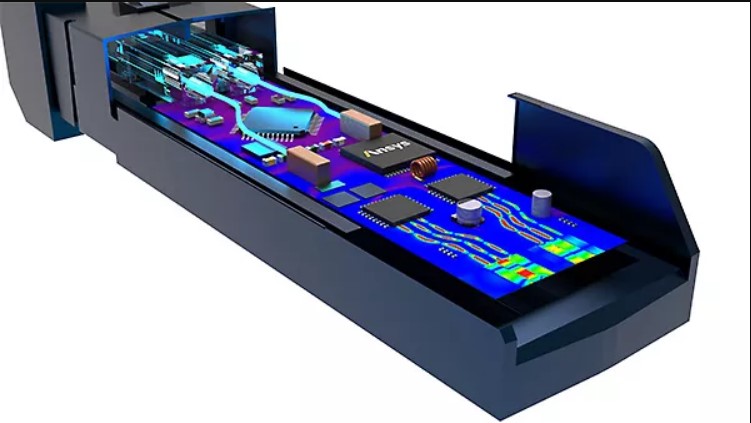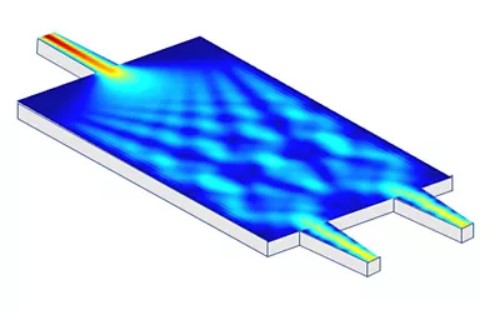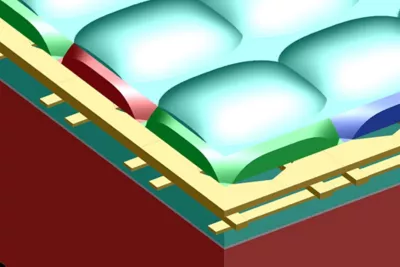Ansys Lumerical's comprehensive suite of photonics simulation and analysis tools offers component-level and system-level simulations to optimize performance, minimize physical prototyping costs and reduce time-to-market.
Ansys Lumerical, a complete photonics simulation software solution, enables the design of photonics components, circuits, and systems. Device and system level tools work together seamlessly allowing designers to model interacting optical, electrical, and thermal effects. Flexible interoperability between products enables a variety of workflows that combine device Multiphysics and photonic circuit simulation with third-party design automation and productivity tools. Python-based automation and flows for building and using compact models support the industry’s leading foundries.
Enhanced design flows enable designers with compact models calibrated to leading foundry processes.

|
[FDTD is the gold – standard for modelling nanophotonic devices, processes and materials] 3D CAD Environment Accurate Material modeling Non – Linearity and Anisotropy Power Post – processing [MODE has everything you need to get the most out of your waveguide and coupler design] Accurately simulate Planar Waveguides High Accuracy with Advanced Conformal Mesh Solver Compatible With Dispersive Materials Compatible With High-Index Contrast Materials Finite-element drift-diffusion/Poisson Solver Adaptive mesh generation based on doping, optical, and thermal profiles 3D CAD design environment Flexible Visual material database [Built on the finite element method, HEAT provides designer with comprehensive thermal modelling capabilities] Steady state and transient simulation Comprehensive thermal material models Study conductive, convective and radiative effects Joule heating from electric conduction Automatic mesh refinement based on import heat profiles |
|
[DGTD tackles the most challenging classes of nanophotonic simulation with a finite element Maxwell’s solver] Object -conformal finite element mesh, free of staircasing Accurate control with higher order mesh polynomials Far-field and grating projections Gaussian vector beams [FEEM provides superior accuracy and performance scaling with a finite element Maxwell’s solver] Accurate results for curved waveguide geometries Superior performance scaling with high order mesh polynomials Spatially varying index perturbations for modeling active devices [MQW simulates quantum mechanical behavior in atomically thin semiconductor layers] Fully coupled quantum mechanical structure calculation Wavefunction and band diagram calculation Gain and spontaneous emission Incorporates temperature, field and strain effects [STACK is an ideal solution for the rapid analysis of thin multi-layer stacks] Ideal for prototyping think film applications Plane-wave and dipole illumination functions Captures interference and micro activity effects |

|

|
[Ansys Lumerical’s photonic intergrated circuit simulator verifies multi-mode, bidirection and multi-channel PICs] Hierarchical schematic editor Frequency domain analysis in circuit solver Transient sample and block mode simulators Multi-mode and multi-channel support PIC element libraries for laser and system modelling [Enables proven, automated, cross-simulator photonic compact model library (CML) generation] CMLs support multiple EDPA workflows IP protected INTERCONNECT and Verilog-A models from a single data source High-quality compact models for frequency and time domain simulations Generate statically enabled libraries [Enables multi-mode, multi-channel and bidirectional photonic circuit modelling when used in conjunction with industry’s leading EDA simulators] Facilities design and implementation of electronic-photonic integrated systems Bi directional optical port Scalable optical channels and modes through CML compiler model generation Supports schematic driven layout |
